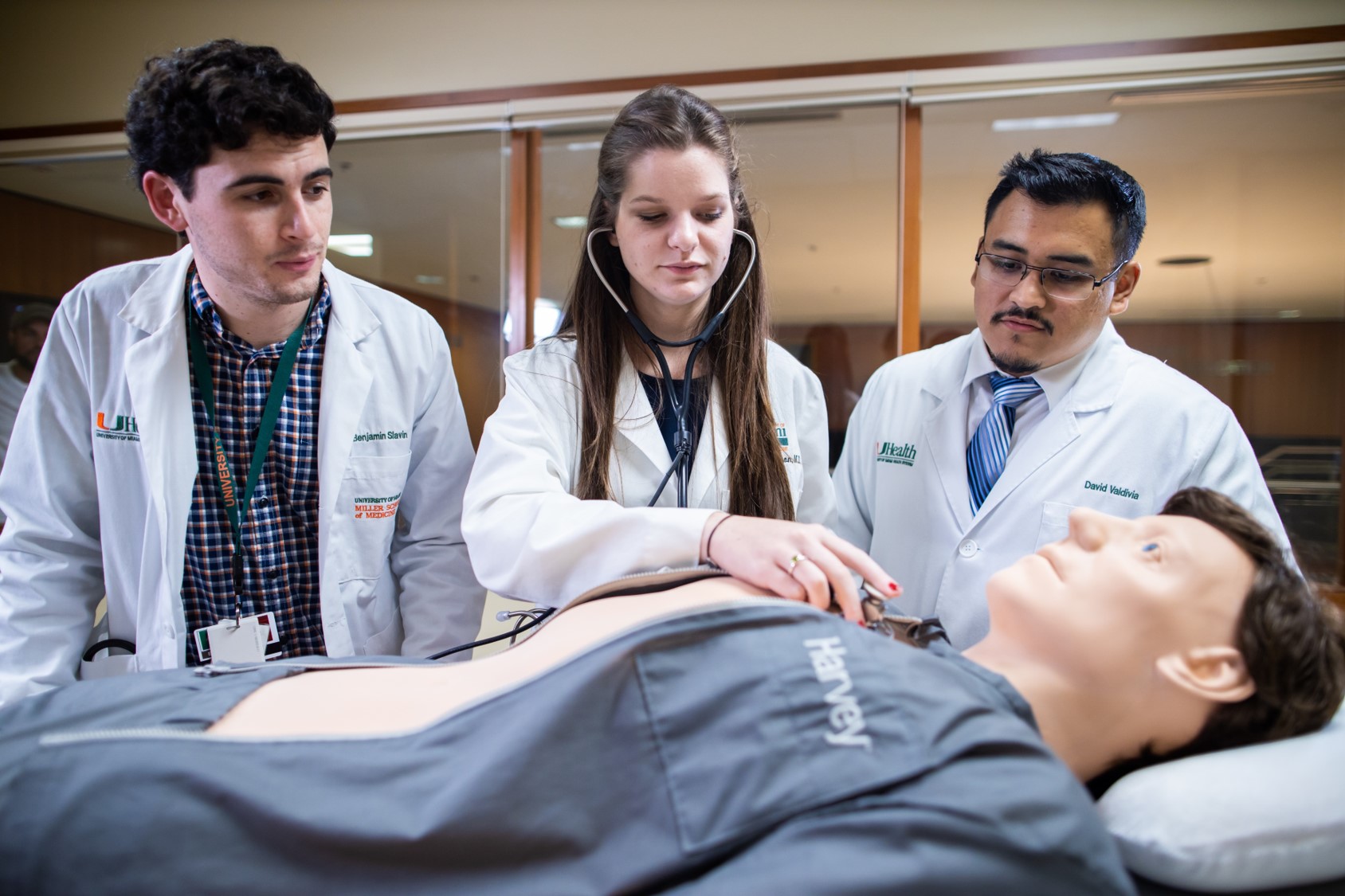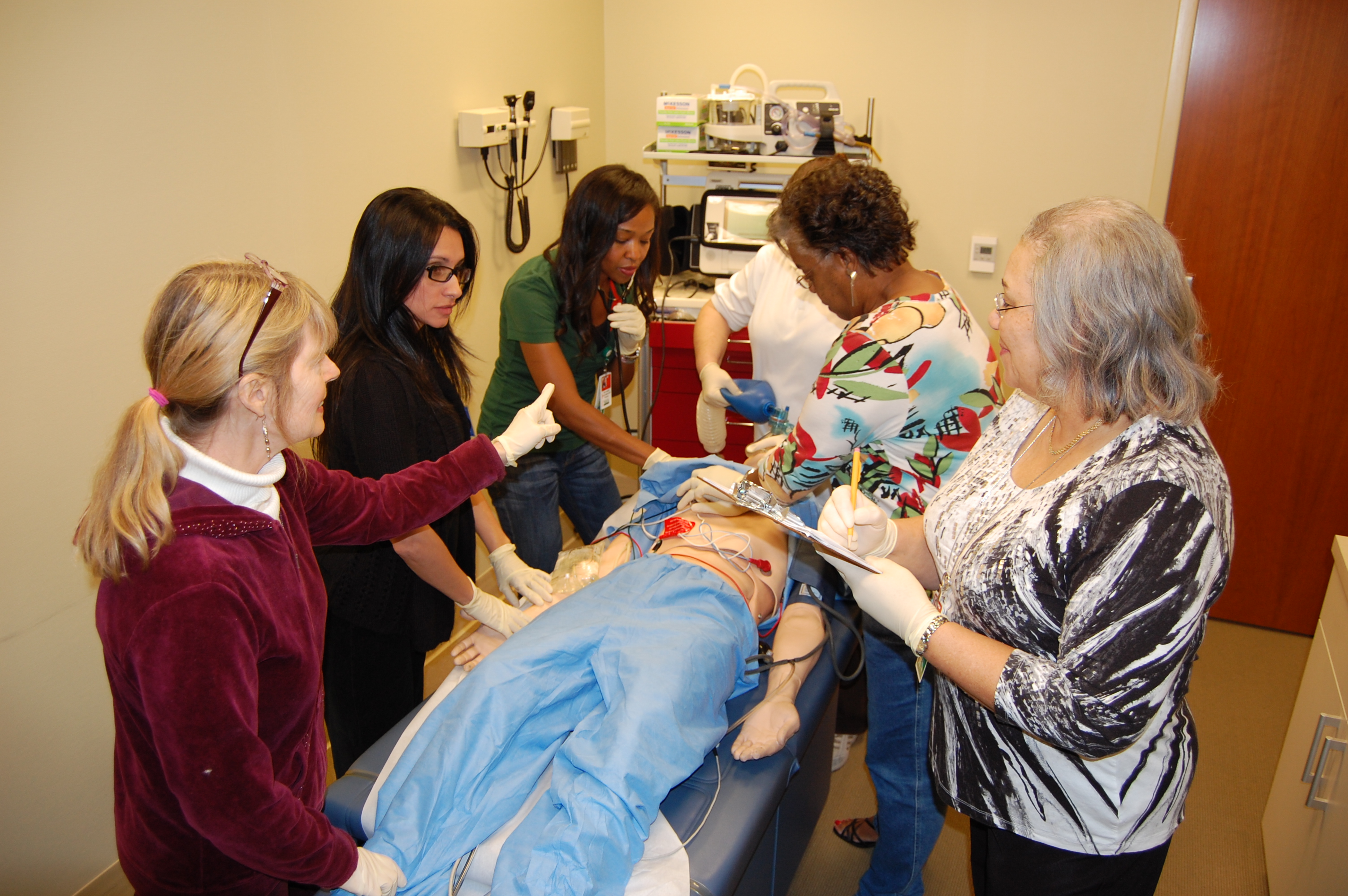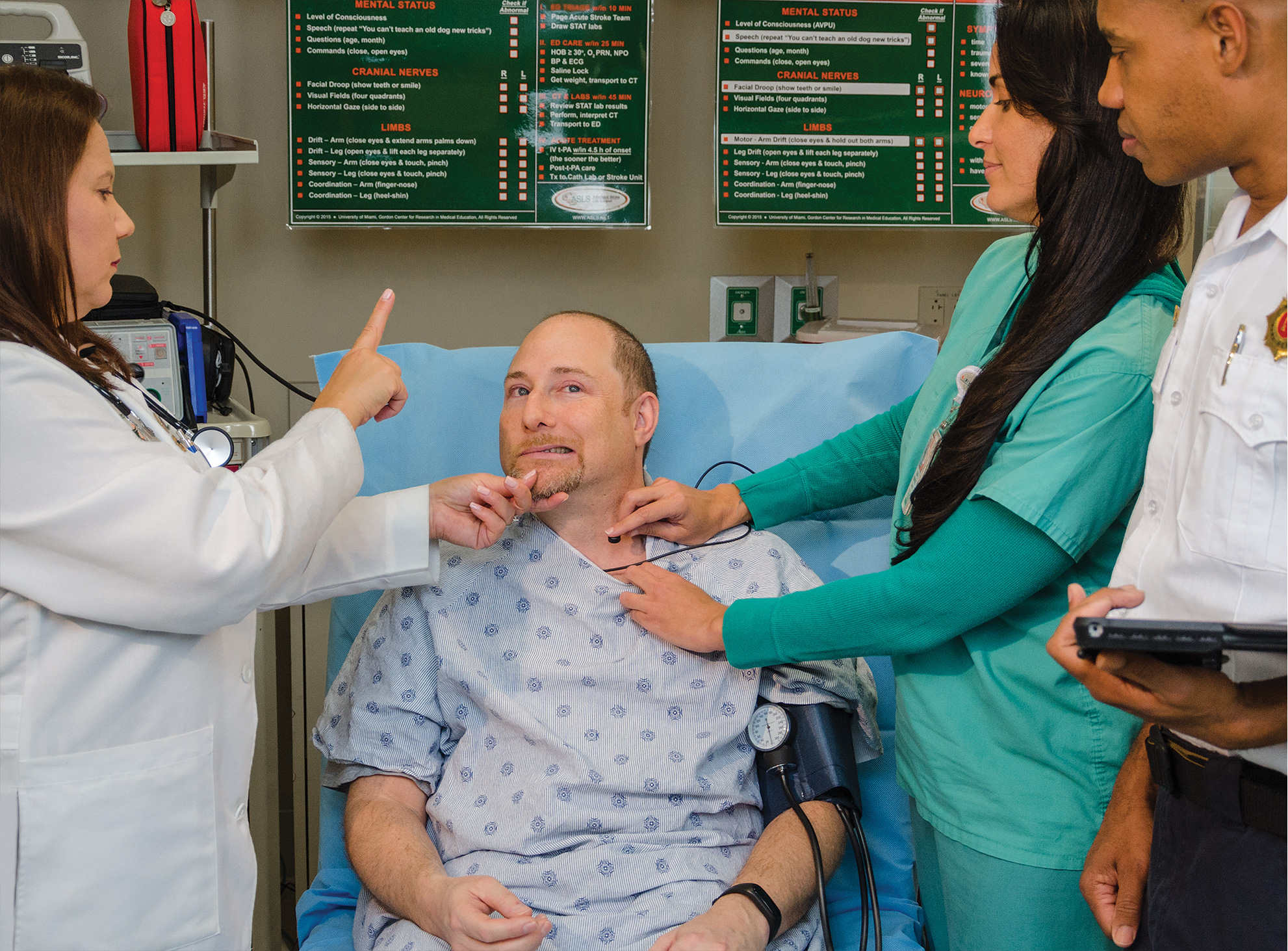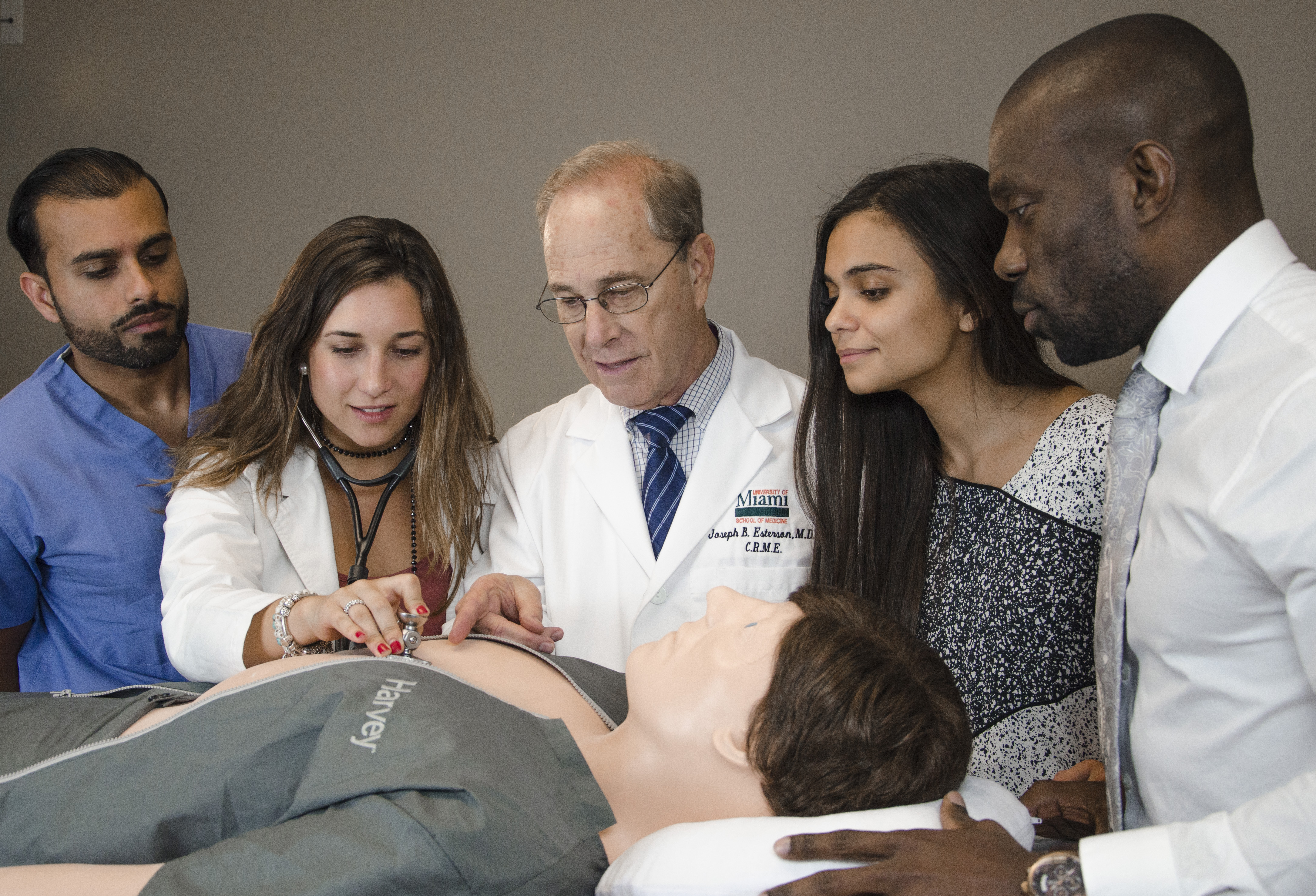Cardiopulmonaire training
voor een betere patiëntenzorg
Al meer dan 50 jaar lang is Harvey een bewezen simulatiesysteem voor het trainen van vaardigheden voor cardiologisch onderzoek aan het bed die toegepast kunnen worden op echte patiënten. Tegenwoordig behandelen zorgverleners en studenten in de zorg een steeds diversere patiëntenpopulatie. Simulatietraining kan hen helpen de essentiële vaardigheden te oefenen en te ontwikkelen die nodig zijn om gelijke zorg te bevorderen; wat leidt tot betere patiëntresultaten.
Om diversiteit en inclusiviteit in de gezondheidszorg te bevorderen is Harvey The Cardiopulmonary Patient Simulator beschikbaar in meerdere huidskleuren om verschillende etnische en raciale patiëntachtergronden te simuleren. Train net als in 50 andere landen in de wereld de volgende generatie zorgverleners met Harvey.
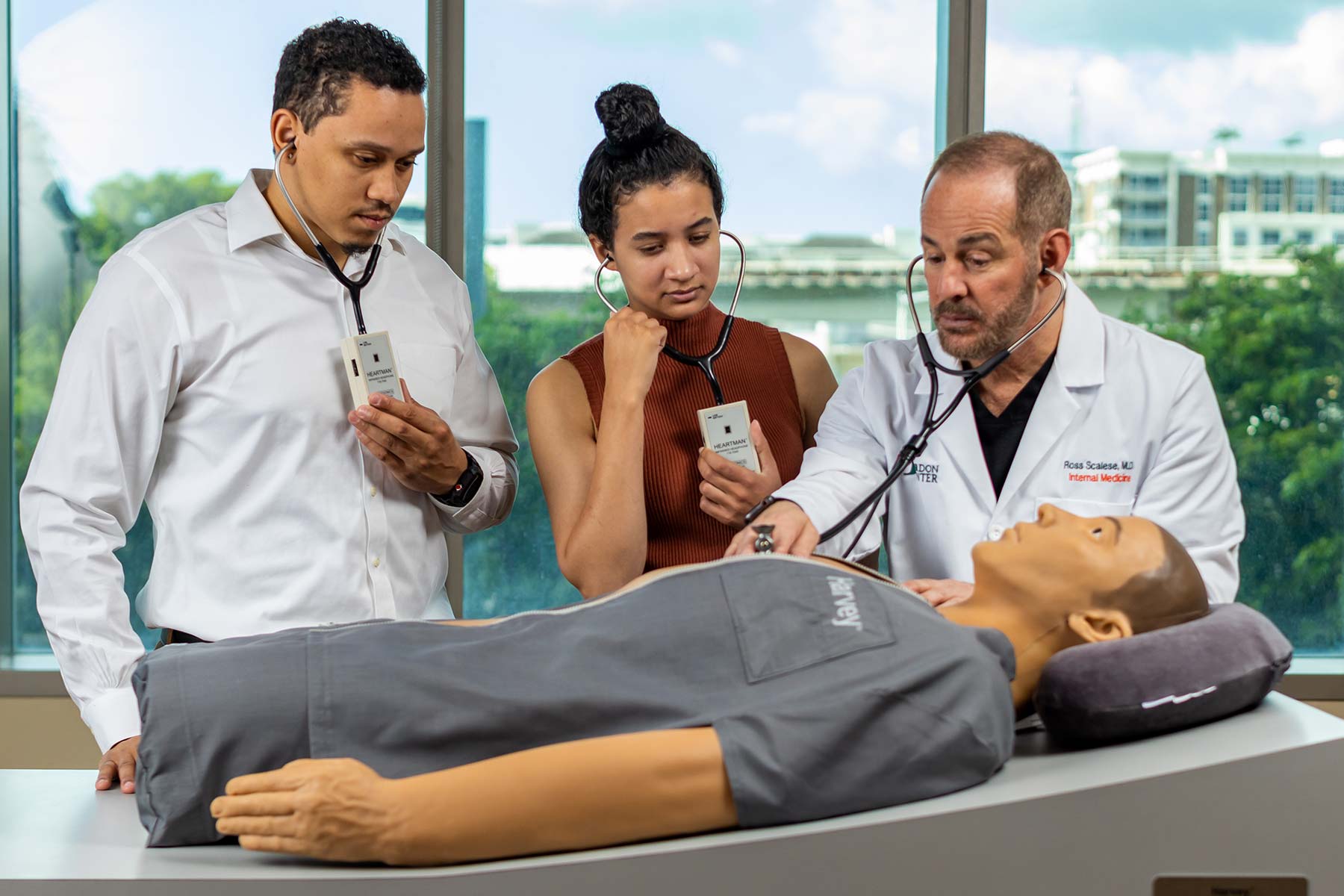
Geavanceerde cardiologietraining
Next GenerationHarvey® kan een breed scala aan hartaandoeningen simuleren en beschikt over 50 verschillende patiëntscenario's en 10 gestandaardiseerde patiëntcases voor onderwijs en beoordeling. Elk patiëntscenario omvat voorgeschiedenis, bevindingen aan het bed, laboratoriumgegevens, diagnostische tests en medische en chirurgische behandeling. Het curriculum van Harvey is opgesteld door experts van over de hele wereld. Het begint met veel voorkomende, minder complexe aandoeningen en gaat verder naar zeldzamere, complexere ziekten.
Het curriculum komt tegemoet aan de behoeften van een breed scala aan cursisten, waaronder studenten, arts-assistenten, artsen en verpleegkundigen, en is te gebruiken voor verschillende leerstijlen en -omgevingen, zoals zelfstudie, training in kleine groepen en klassikale training met begeleiding van een docent.
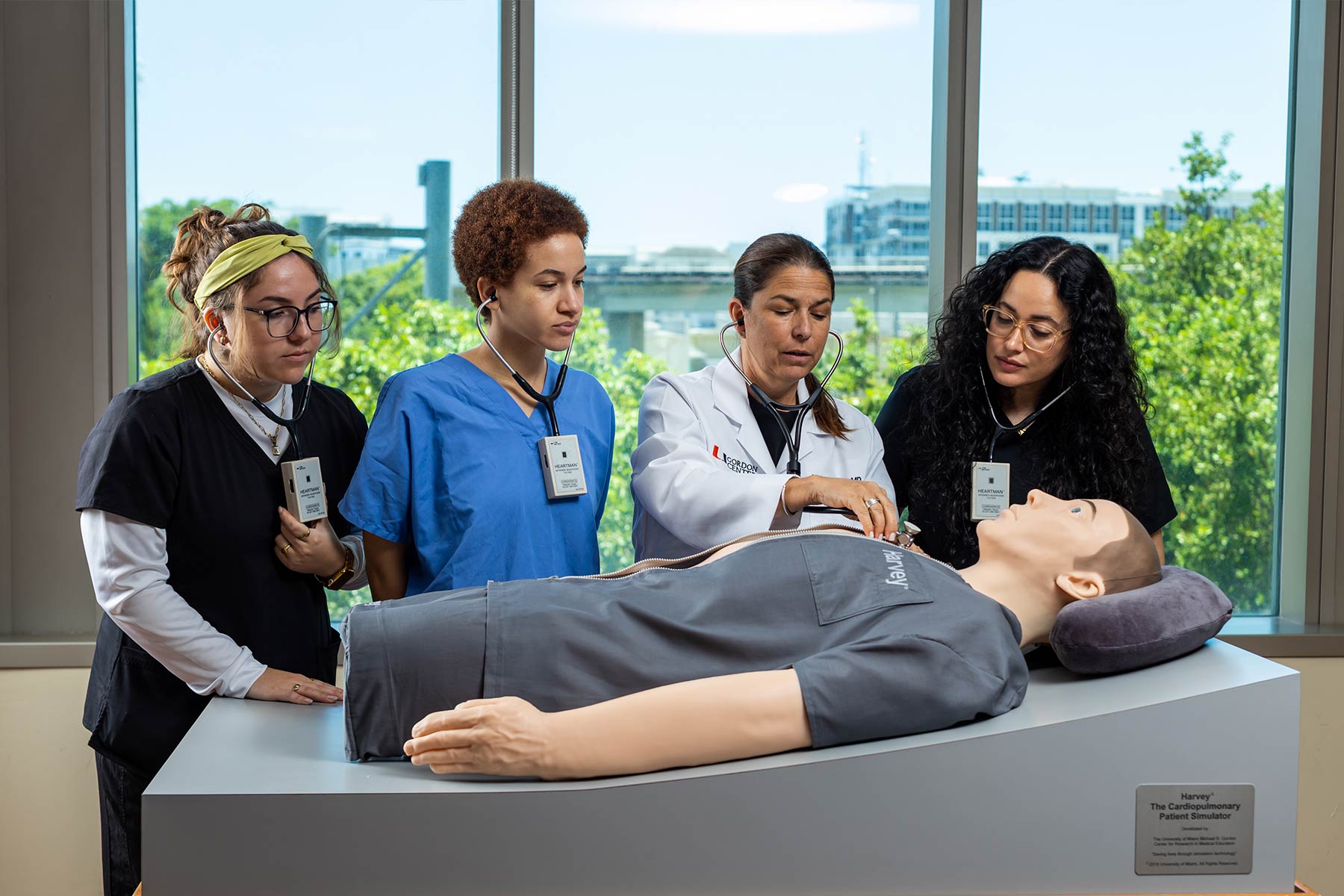
Ontworpen voor alle leeromgevingen
Harvey is draagbaar en kan gebruikt worden in iedere omgeving waarin een patiënt kan worden onderzocht. Kleine groepen met stethoscopen kunnen zonder instructeur getraind worden door de diaprogramma's of het UMedic-systeem te gebruiken. Als de ruimte alleen voor Harvey is bedoeld, moet deze ongeveer net zo groot zijn als een kleine ziekenhuiskamer van een patiënt, zodat er om het bed gelopen kan worden.
Harvey kan ook gebruikt worden in trainingscentra voor klinische vaardigheden en simulatie of in ruimten voor het trainen van vaardigheden. Grotere groepen kunnen getraind worden in een collegezaal door stethoscopen te gebruiken voor auscultatie en videoprojecties voor het observeren van andere fysieke resultaten.
Het allerbelangrijkste is dat de hoofdlocatie prettig is voor cursisten en degene die de leiding heeft. Hoewel 'Harvey' functioneert als een zelflerende simulator, zorgt de aanwezigheid en beschikbaarheid van goed geïnformeerde docenten en medewerkers verder voor een succesvol programma.
On-Demand Webinars
Specifications
Addition of 10 new cases
- Mild systolic heart failure
- Mild diastolic heart failure
- Mild mitral regurgitation (variant)
- Moderate mitral regurgitation
- Mild aortic regurgitation
- Ischemic cardiomyopathy
- Moderate aortic stenosis
- Pulmonary embolism
- Cor pulmonale
- Aortic stenosis and regurgitation
Standardized patient library – 10 cases (Printed notebook and DVD digital files)
General
- Cardiac disease cases (total 50)
- Standardized patient OSCE assessment cases
- Portable
- Breath sound areas (total 6)
- Cardiac auscultation areas (total 9)
- Digitally driven impulses (total 14)
- Bilateral jugular venous impulses (2)
- Bilateral carotid, brachial, radial and femoral arterial pulses (8)
- Chest wall/precordial impulses (pulmonary artery, right ventricle, left ventricle, and displaced left ventricle) (4)
- Modifiable amplitudes and intensities
- Speaker for history-taking
Multiple learning environments
- Self-learning linked with UMedic
- Instructor in small-group sessions
- Lecture settings
- Normal
- Innocent murmur
- Hypertension
- Mild mitral regurgitation
- Mitral valve prolapse, combined click and murmur
- Acute pericarditis
- Mild tricuspid regurgitation
- Chronic severe aortic regurgitation
- Cardiomyopathy
- Severe aortic stenosis addition of 10 new Harvey cases at rate of 90 bpm
Core curriculum features
Harvey provides a comprehensive curriculum by realistically simulating 50 conditions. It is structured to start with common, less complex conditions and progress to more rare and complex diseases.
- Introductory program
- Normal (60 and 90 bpm)
- Innocent murmur (60 and 90 bpm)
- Aortic valve sclerosis
- Hypertension (60 and 90 bpm)
- Angina pectoris
- Acute inferior myocardial infarction
- Acute anterior myocardial infarction
- Ventricular aneurysm
- Mitral valve prolapse (MVP) (60 and 90 bpm)
- MVP, isolated click and murmur
- Mitral regurgitation, chronic
- Mitral regurgitation, mild (60 and 90 bpm)
- Mitral regurgitation, mild (variant)
- Mitral regurgitation, acute
- Mitral stenosis (MS) with severe tricuspid regurgitation (TR)
- MS with mild TR (60 and 90 bpm)
- Mitral stenosis and regurgitation
- Aortic regurgitation, chronic (60 and 90 bpm)
- Aortic regurgitation, acute
- Aortic stenosis (60 and 90 bpm)
- Hypertrophic obstructive cardiomyopathy
- Cardiomyopathy (60 and 90 bpm)
- Acute pericarditis (60 and 90 bpm)
- Primary pulmonary hypertension
- Atrial septal defect
- Ventricular septal defect
- Patent ductus arteriosus
- Pulmonary stenosis
- Coarctation of the aorta
- Tetralogy of Fallot
- Coronary disease with heart failure
- Mild systolic heart failure
- Mild diastolic heart failure
- Moderate mitral regurgitation
- Moderate aortic stenosis
- Mild aortic regurgitation
- Aortic stenosis and regurgitation
- Pulmonary embolism
- Cor pulmonale
